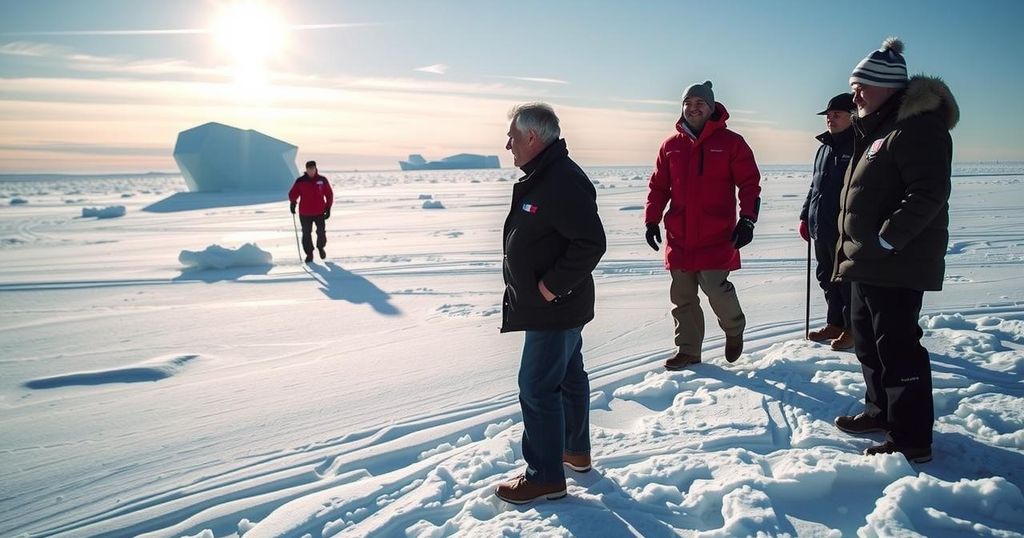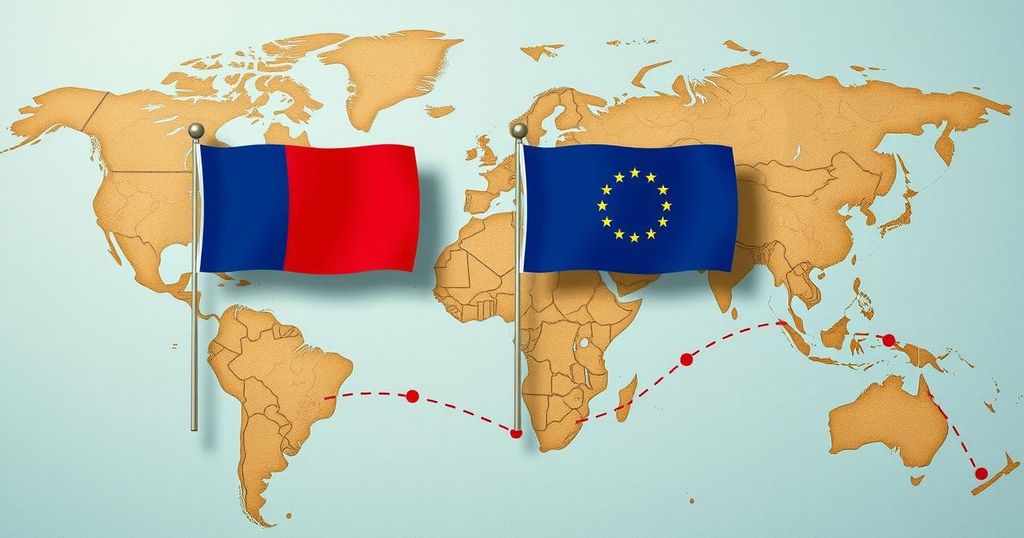Chile’s President Boric Undertakes Historic Visit to the South Pole
Chilean President Gabriel Boric has become the first leader from the Americas to visit the South Pole, reaffirming Chile’s sovereignty over parts of Antarctica. His visit to the Amundsen-Scott South Pole Station emphasizes the country’s commitment to significant scientific endeavors related to climate change. Accompanied by scientists and government officials, Boric’s trip marks a pivotal moment in Chile’s Antarctic aspirations as it seeks to play a major role in international research collaborations.
Gabriel Boric, the President of Chile, has made a historic visit to the South Pole, marking him as the first leader from the Americas to do so. His arrival at the Amundsen-Scott South Pole Station symbolized Chile’s assertion of sovereignty over a portion of Antarctica. During his visit, President Boric emphasized that this journey signifies a crucial milestone for Chile’s Antarctic ambitions, as it represents the inaugural trip of a Chilean president to this significant region while discussing the nation’s objectives. Accompanied by a group of scientists and several key cabinet members, including the ministers of armed forces and environmental affairs, Boric affirmed Chile’s commitment to playing a substantial role in climate change research and other scientific initiatives in Antarctica. The government has stated that the collaboration among various sectors, including research institutions and the armed forces, aims to establish Chile as a pivotal access point to Antarctic research activities. At just 35 years of age, President Boric emerged as Chile’s youngest leader after winning the presidential election in 2021. His journey follows that of only two previous world leaders—the prime ministers of Norway and New Zealand—who have visited the South Pole. It is notable that several nations, including Chile, hold territorial claims to different regions of Antarctica, although the continent is recognized as an area dedicated to scientific research, devoid of a permanent government or indigenous inhabitants. The Antarctic Treaty, effective since 1961, fosters international cooperation within this domain. The Amundsen-Scott Station bears the names of Roald Amundsen and Robert Scott, explorers who significantly contributed to the history of polar exploration.
The visit by President Gabriel Boric is significant not only for Chile but also in the context of international relations regarding Antarctica. Several nations have staked claims to portions of the continent, which is primarily viewed as a global commons intended for scientific research and environmental preservation. The Antarctic Treaty seeks to ensure that the continent remains free from military activity and promotes scientific cooperation among nations. Boric’s visit and his emphasis on scientific projects signal Chile’s intention to assert its interests and expand its role in key environmental investigations, particularly in the wake of increasing climate challenges. His leadership marks a new chapter for Chile, as he fosters international collaborations and advances national policies regarding scientific research in this untouched part of the world.
President Gabriel Boric’s historic journey to the South Pole marks Chile’s first such presidential visit, reinforcing the country’s claims and ambitions concerning Antarctic sovereignty and scientific research. The visit highlights Chile’s dedication to addressing climate issues and establishing itself as a key player in Antarctic exploration and science. By bringing together officials, scientists, and the armed forces, Boric aims to secure Chile’s role as a gateway to the continent, demonstrating a commitment to international scientific cooperation and environmental stewardship.
Original Source: www.bbc.com








Post Comment